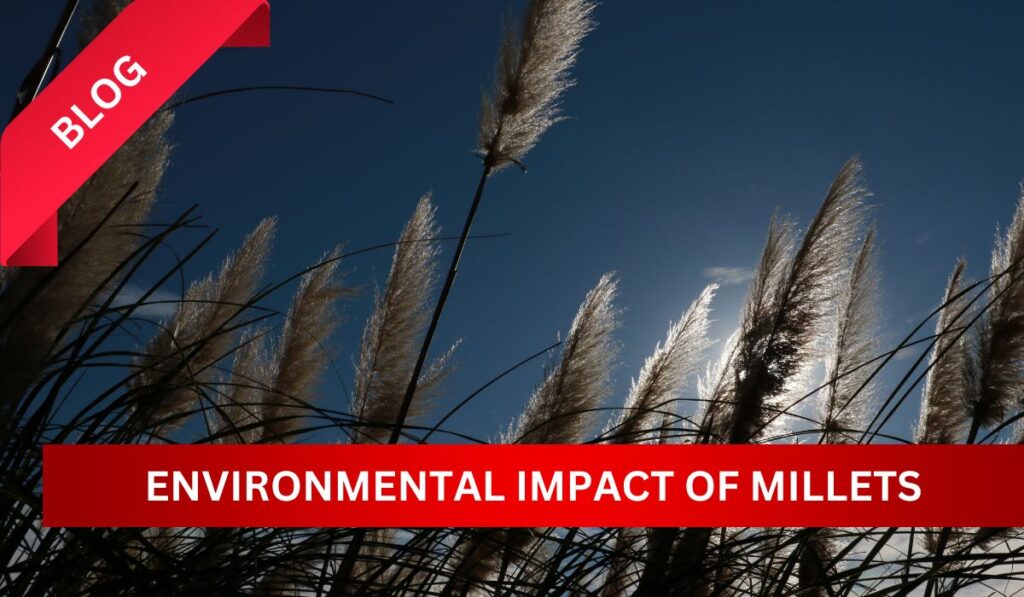Introduction
As global awareness of the environmental challenges we face continues to grow, the choices we make in our daily lives, including our dietary choices, play a significant role in mitigating climate change and preserving our planet. One such choice that is gaining recognition for its sustainability is the cultivation and consumption of millets. In this blog post, we will delve into the environmental impact of millet farming and why it stands as a sustainable grain choice for a greener future.
The Environmental Footprint of Traditional Crops
Traditional staple crops like rice and wheat, while essential for global food security, often have a substantial environmental footprint:
- High Water Consumption: Rice, for example, requires extensive water irrigation, contributing to water scarcity issues in many regions.
- Heavy Pesticide Use: To protect these crops from pests and diseases, farmers often resort to pesticide and herbicide application, impacting soil health and the ecosystem.
- Land Degradation: Monoculture farming of these staples can lead to soil degradation, loss of biodiversity, and increased vulnerability to pests.
Why Millets Are a Sustainable Choice
Millet farming offers a more sustainable alternative for several reasons:
- Low Water Requirement: Millets are drought-resistant and require significantly less water compared to rice and wheat, making them suitable for regions with water scarcity.
- Reduced Chemical Inputs: Millets are naturally resistant to pests and diseases, reducing the need for chemical pesticides and herbicides.
- Crop Rotation and Biodiversity: Millet cultivation often involves crop rotation and mixed cropping, promoting soil health and biodiversity.
- Climate Resilience: Millets are resilient to adverse weather conditions, such as droughts and high temperatures, making them a reliable crop in the face of climate change.
- Carbon Sequestration: Millet plants have deep root systems that can sequester carbon, helping combat climate change.
The Positive Impact of Millet Farming
By choosing millets, we can contribute to several positive environmental outcomes:
- Water Conservation: Reduced water usage in millet farming helps alleviate water stress in regions facing shortages.
- Biodiversity Conservation: Crop rotation and mixed cropping practices in millet farming enhance biodiversity and protect ecosystems.
- Soil Health: Millet cultivation helps maintain soil fertility and reduce the risk of soil erosion.
- Lower Carbon Footprint: The carbon sequestration potential of millets aids in mitigating greenhouse gas emissions.
Incorporating Millets into Your Diet
Making millets a part of your diet is a simple but impactful way to support sustainable farming practices. Here are some tips:
- Try Millet-Based Recipes: Experiment with millet-based recipes, such as millet pilaf, dosa, or porridge.
- Swap Out Traditional Staples: Replace rice or wheat with millets in your meals to reduce the carbon footprint of your diet.
- Support Local Farmers: Purchase millets from local and sustainable sources to encourage responsible farming practices.
Conclusion
The environmental impact of millet farming is a shining example of how our dietary choices can make a difference in the fight against climate change and the preservation of our planet’s resources. By embracing millets in our diets, we not only promote sustainable agriculture but also nourish ourselves with nutrient-rich grains that are kinder to the Earth. It’s a small change that can lead to significant positive environmental outcomes, one meal at a time.

